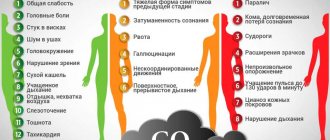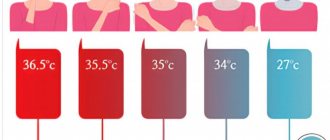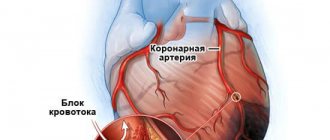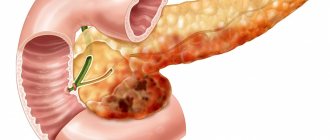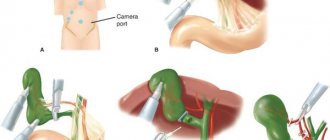For many people, mushrooms are an incredibly appetizing dish that we sometimes eat in large quantities.
Everything would be fine, but few people know that mushrooms can not only cause poisoning, but also lead to death. Of course, when everything is good, you don’t even need to think about it, but what if the “scenario” has changed? What if you ate a poisonous mushroom along with edible mushrooms? What are the symptoms of mushroom poisoning? What to do if you are poisoned by mushrooms? Who should I contact? Let's look at everything in order.
Fungi are living organisms that, by their origin, are at the junction between plants and animals.
Experts note that mushrooms are a difficult-to-digest product for the intestines, therefore, they are not recommended for use by children, the elderly, as well as pregnant and lactating women, especially in large quantities.
Symptoms of mushroom poisoning
The first signs of mushroom poisoning appear after 1.5-2 hours, but sometimes a day or two after eating them.
Symptoms include:
- Severe abdominal pain;
- Nausea and vomiting;
- Diarrhea (diarrhea);
- Increased body temperature – up to 38°C;
- Cold extremities - arms and legs;
- Dizziness;
- Headache;
- Weak pulse;
- General weakness;
- Inflammatory process in the gastrointestinal tract.
In case of severe poisoning, as well as poisoning with poisonous mushrooms (pale toadstool, red fly agaric, false foam, satanic mushroom), the following symptoms are possible:
- The appearance of delusions, hallucinations;
- Mental disorder;
- Severe diarrhea;
- Increased sweating and drooling;
- Anuria;
- Slight constriction of the pupils;
- Increased drowsiness;
- Jaundice (Gospel disease);
- Heart failure;
- Breathing disorders;
- Pulmonary edema;
- Coma.
If timely and qualified assistance is not provided, a person may fall into a coma, and then death may occur.
Recently, cases of mushroom poisoning have become more frequent. Most poisonings are caused by the consumption of lamellar poisonous mushrooms (primarily toadstool), which are mistakenly perceived as edible champignons and russula.
The main cause of mushroom poisoning:
- inability to recognize edible and poisonous mushrooms,
- improper preparation of dishes from some edible mushrooms,
- as well as possible mutations of edible mushrooms.
There are relatively few types of poisonous mushrooms, and only the toadstool is deadly poisonous. Treatment of mushroom poisoning must begin as early as possible.
Types of mushroom poisoning
Depending on the nature of the poisonous nature inherent in certain mushrooms, three types of poisoning are distinguished:
The first species is associated with a group of mushrooms from the fly agaric genus - toadstool and related species containing amanithemolysin, amanitotoxin, and phalloidin.
The second type is observed as a result of eating red, panther, porphyry and other types of fly agarics containing muscarine, mycoatropine, mycotoxin and other poisons.
The third type is poisoning with lines that contain helvella acid, which destroys blood cells (hemoglobin) and the liver.
The most common types of mushroom poisoning are poisoning with toadstool, fly agaric and morels.
Toadstool poisoning
This occurs, as a rule, due to the external similarity of this mushroom to edible mushrooms - russula, rows and champignons. For serious poisoning, it is enough to eat half or even a third of the mushroom, especially for children who are hypersensitive to mushroom poisons.
In recent years, the pale toadstool has come to be called a real killer because, until its umbrella cap opens, it can be mistaken for a semi-edible or edible mushroom.
This is the most poisonous of all mushrooms.
The poison amanite, contained in the toadstool, decomposes liver cells. If timely assistance is not provided, a person quickly dies. All other mushrooms are small fry compared to this “pale monster”. Even corpse poison is much weaker than the poison of the pale grebe. Up to 90% of those poisoned by this mushroom die.
In the clinic of acute poisoning with toadstool, 4 periods can be distinguished:
- Hidden period. It lasts from 8 to 24 hours after eating mushrooms. All this time, the person feels practically healthy, although the poisons are already absorbed into the blood, making their way to vital centers.
- In the 2nd period, lasting from 1 to 6 days, the poison affects the gastrointestinal tract. The body quickly begins to lose water due to nausea and vomiting. There are stomach pains, frequent and loose stools, sometimes mixed with mucus and blood. In children, this period is very difficult, since the poison quickly penetrates the liver, which is why they can die against the background of acute liver failure.
- Impaired liver and kidney function. This usually happens on the 5-6th day. If during this period the patient does not have time to receive the entire complex of antitoxic therapy, then most often death occurs.
- If effective assistance was provided, then the 4th period begins. The period of recovery, when all body functions are gradually restored.
The main symptoms of poisoning with toadstool:
- the appearance of sudden pain in the abdominal area,
- vomit,
- diarrhea (sometimes cholera-like type - “rice water”),
- severe general weakness,
- cyanosis (cyanosis) of the skin and mucous membranes,
- decrease in body temperature,
- convulsions.
Jaundice and liver enlargement may occur. The pulse is thread-like, weakly filled, with a frequency of up to 120-140 beats per minute. Blood pressure is significantly reduced. Possible loss of consciousness.
Fly agaric poisoning
“Is it possible to get poisoned by this mushroom! Who doesn’t know him - this poisonous “little red riding hood”. Who needs him!” - you hear such words not only from mushroom experts, but also from amateurs in this matter. Even children know about fly agaric.
All this is true. However, fly agaric poisoning does occur, albeit infrequently. Medical literature periodically reports this. Here, for example, is one extract from an old book.
“In one of the Siberian villages, two boys aged 3 and 4 years old ate dried red fly agarics, which their parents saved for making fly poison. Half an hour later, both children developed vomiting and diarrhea, followed by profuse sweating and drooling. By the evening, convulsions appeared, the pulse became difficult to palpate, and both children lost consciousness. Fortunately, medical help arrived in time, and everything ended well. Already on the 5th day, the children were discharged from the hospital completely healthy...”
The main symptoms of fly agaric poisoning are described here. But stories of this kind do not always end well if time to provide urgent assistance is lost. The poison muscarine contained in fly agaric causes a number of severe symptoms.
The incubation period, i.e. the latent period, lasts much less time than with poisoning with toadstool - from 0.5 to 6 hours.
The main signs of poisoning:
- nausea,
- vomit,
- watery diarrhea,
- profuse sweating,
- salivation and lacrimation.
Signs of neuropsychic disorders appear quite quickly: dizziness, confusion, hallucinations, delirium. The pupils are dilated.
In severe cases, a coma with loss of consciousness develops.
Why do people sometimes get poisoned by fly agarics? Yes, because some of their species, in particular the panther one, are vaguely reminiscent of champignons in their external color and shape.
Stitch and morel poisoning
Strings and morels belong to the category of conditionally edible mushrooms. They are poisonous to those who do not know how to handle them.
Toxicity is destroyed by appropriate processing. These spring mushrooms contain helvella acid, a poison that can cause fatal poisoning. But boiling for 10-20 minutes completely neutralizes the poison, since helvella acid passes into the decoction.
Stitches can also be rendered harmless by drying - in this case, helvella acid is oxidized by air and inactivated. Poisoning occurs when they are eaten unprocessed, undercooked or underdried.
Symptoms of poisoning develop after 6-10 hours of the incubation period:
- there is a feeling of weakness,
- pain in the epigastric region,
- nausea,
- vomiting mixed with bile,
- occasional diarrhea.
In severe cases, on the second day the following appear:
- signs of jaundice, there is an enlargement of the liver and spleen,
- severe headaches,
- loss of consciousness,
- numbness, convulsions.
Red blood cells are destroyed, i.e. hemolysis occurs, in which hemoglobin leaves the red blood cells. As a result, the blood turns transparent red (“lacquer blood”).
In case of severe poisoning, death can occur.
In mild cases, recovery occurs after 1-2 days, in more serious cases - after a few weeks.
Lethal outcomes, reaching 30%, usually occur on the 3-4th day after consuming mushrooms with symptoms of heart failure, often in a comatose, unconscious state.
Providing first aid for mushroom poisoning
Treatment of mushroom poisoning must begin as early as possible.
It comes down to removing toxic substances from the body.
First you need to make sure that it is really mushroom poisoning.
At the first sign of it, you should immediately cleanse and rinse the gastrointestinal tract.
Several tablets of activated carbon should be given internally to bind poisons. It is better to give it in the form of an aqueous suspension. After rinsing the stomach, the patient must be put to bed, having also done a cleansing enema before doing this. If for some reason it was not possible to administer a cleansing enema, you can limit yourself to a laxative - castor oil or bitter salt.
With any poisoning, the patient loses a lot of fluid (with vomiting, diarrhea), and along with it, mineral compounds necessary for the normal course of metabolic processes are washed out of the body. Therefore, the loss of fluid and role must be replenished, for which the victim is given small sips of salted water or strong tea. They also reduce the feeling of nausea and vomiting. Even despite a sharp improvement in the condition, the patient should not be allowed to drink any alcohol: alcohol in any concentration promotes faster dissolution and absorption of poisons into the body.
Typically, those suffering from poisoning need cardiovascular medications. You can introduce camphor (2 ml of a 20% oil solution), cordiamine (1 ml). For convulsions, it is recommended to give one of the sedative medications.
In all cases of mushroom poisoning, bed rest is required; in severe conditions, hospitalization is indicated.
In recent years, we have heard that people are being poisoned by mutant mushrooms.
This can be answered with the following words: “There are no mutant mushrooms. There are unfortunate mushroom pickers." Mutations in fungi, as in other representatives of flora, not to mention fauna, are an extremely slow process; changes can only occur within one species. In a word, just as it is impossible to raise a cuckoo chick from a flycatcher chick, it is also impossible to obtain a pale grebe from an oiler.
Poisoning is caused by unfamiliar poisonous mushrooms, picking mushrooms near industrial enterprises, or improper preparation. In addition, many mushrooms have poisonous counterparts: honey fungus and false honey fungus, edible butterfly and false honey fungus. We should not forget that in environmentally unfavorable places, even edible mushrooms can accumulate toxic substances, and they should not be collected there.
Rules for storing mushrooms
The first rule: mushrooms cannot be stored raw for a long time - no more than one day.
The second rule: before cooking, mushrooms must be thoroughly cleaned and washed. Remains of soil where botulism pathogens may be present are especially dangerous.
Also follow the rules that have been repeatedly tested in practice by professional mushroom pickers:
- If you don’t want to get hurt, never collect low-value agaric mushrooms! Forever give up russula, greenfinches and greenfinches. And in general from all mushrooms that look like the deadly toadstool;
- If you are not sure that a mushroom is edible, do not take it! Even among champignons there are fellow mushrooms that smell foul of carbolic acid and turn yellow when cut, which can cause poisoning;
- Never pick mushrooms near enterprises, industrial dumps and busy roads! Fungi actively accumulate toxic substances from the soil in their tissues. This also applies to suburban areas. Remember - the deeper into the forest, the purer the mushroom!
- never buy canned mushrooms from your hands, carefully carry out heat treatment when sealing cans of mushrooms;
- Don’t believe that mushroom soup can be tested for toxicity by blackening a silver spoon or darkening an onion. These are idle inventions.
Poisoning can also be caused by edible mushrooms that have not undergone proper heat treatment or have grown in contaminated areas or along highways.
It is necessary to properly prepare mushrooms for consumption. Many patients claim that they cooked mushrooms for a long time. However, it is not long-term cooking that is important, but replacing the water in which the mushrooms are cooked. The water must be changed several times (at least three times), because mushroom broth can be potentially dangerous.
Even a minimal dose of poison is considered lethal. Therefore, be sure to wash your hands after touching mushrooms. There are many cases where poison was transferred to other products through unwashed hands.
What worries doctors most is that among the patients there are children admitted with poisoning, there are even children as young as one year old, and it is very rare that they can be saved.
You should also remember that mushroom dishes are difficult to digest. They should not be used by children, people with diseases of the gastrointestinal tract, liver or chronic diseases of other internal organs.
Read also:
- The Civil Defense and Emergency Management Department warns against eating mushrooms that are unfamiliar to you.
- Poisoning by mushrooms and poisonous plants
- On monitoring the safety of mushrooms and measures to prevent poisoning
- RECOMMENDATIONS FOR CITIZENS: How to collect and cook mushrooms?
- How not to get poisoned by mushrooms
Basics of life safety
Safety in the heat.
Sunburn In today's post we will share with you information about first aid for sunburn. Information to…
Safety in the heat. Tips for all occasions...
How to escape from the scorching sun and stuffiness - read our useful material. Air conditioners –…
Water safety. It is important to know
The sun, air and water, when used correctly, are a source of hardening and strengthening of health...
OBZD. Fire in the forest. What to do?
Warm weather conditions will be conducive to outdoor recreation. Unfortunately, people often forget about the...
Poisoning by mushrooms and poisonous plants
Mushrooms are representatives of a special living Kingdom that have nothing in common with plants. Their su...
OBZD. Annoying insects
High humidity, the rainy season, which visited us before the onset of persistent hot weather, geographical...
Safety in the forest
Warm weather conditions will be conducive to outdoor recreation. Unfortunately, people often forget about the...
Safety at a picnic
How to avoid getting sunburned, how to protect yourself from poisoning, how to protect yourself from ticks, how to be safe...
Fire in the country: from causes to rules...
A fire in a country house is, to put it mildly, an extremely undesirable situation. And yet, from time to time, dachas...
Attention! Cold weather causes hypothermia in the body
Every year, victims with various stages of frostbite are admitted to medical institutions. On the emb…
Car stuck on winter road
Hypothetically, this situation could happen to every motorist. Don't panic etc...
Ice: Safety Rules
With the onset of winter, street injuries more than doubled seasonally. I agree...
On the safe use of detergents and disinfectants in everyday life...
In modern conditions, people are constantly surrounded by aggressive chemicals. This n...
How to measure radiation from a cell phone flash
In connection with the installation of cellular base stations (BS) on the roofs of residential high-rise buildings and on the territory…
Storm wind
Wind is the horizontal movement of air flow parallel to the earth's surface, resulting...
On the website of the Federal Accreditation Agency anyone can check whether it complies…
Rosakkreditatsiya has opened a convenient digital platform in the format of a landing page. This tool calls…
Recommendations for the population on behavior in conditions of high smoke...
In case of increased smoke content in the atmospheric air caused by forest fires, in order to prevent…
Tick-borne infections. REMINDER
Currently, tick-borne infections (namely, infections transmitted by ixodid ticks) represent...
Recommendations for maintaining health during tourist trips
When traveling to foreign countries, especially with a hot and unusual climate, all tourists...
About recommendations on how to celebrate the New Year without harm...
The days of the winter holidays will be filled with only positive emotions if you follow these simple rules...
The carrier’s liability for causing harm to a passenger’s health…
A memo has been published on the official website of Rospotrebnadzor, which explains issues of responsibility...
RECOMMENDATIONS FOR CITIZENS: How to collect and cook mushrooms?
Every year in the Russian Federation, about 1 thousand victims of mushroom poisoning are registered, ...
Providing first aid for a snake bite
Poisonous snake bites pose a danger to human life and health. Despite the fact that these pr…
Sudden building collapse. Memo to the population
The collapse of a building, complete or partial, refers to emergency situations that result in...
How to protect yourself from winter injuries?
At this time of year, bruises and bone fractures (about 15%), and dislocations (about 10) predominate. Main reasons...
Ministry of Internal Affairs warns about financial scammers
In recent years, fraud using mobile communications and...
Snake bites: prevention, first aid, treatment
Poisoning by snake venom is studied by such a branch of medicine as clinical toxicology, and to master the in...
Be careful with mushrooms
Recently, cases of mushroom poisoning have become more frequent. Most poisonings are caused by the use of...
On the purchase of children's goods through cross-border online trading
Rules for the circulation on the market of products for children released into circulation on the territory of states - h...
Utility services remind you of safety rules for New Year...
The New Year and the long weekend that follows are a long-awaited event. Someone, of course, will leave to celebrate...
Botulism
Improperly prepared or stored mushrooms, such as canned mushrooms, can cause botulism.
Botulism is a serious and serious disease that develops as a result of an infection entering the body, located mainly in the ground, next to the spores of the mycelium. If the mushroom is poorly washed, peeled, or not sufficiently boiled, an infection can enter the body.
The first signs of botulism appear 12-72 hours after eating mushrooms.
The main symptoms of botulism are:
- Nausea and vomiting;
- Visual impairment (everything floats, doubles);
- Convulsions;
- Diarrhea;
- Headache;
- Labored breathing;
- Dry mouth.
Important! At the first signs of botulism, i.e. After eating canned mushrooms, consult a doctor immediately!
The main causes of champignon poisoning
There are many reasons why poisoning with these seemingly harmless mushrooms can develop. We discussed the main reasons below.
- Growing champignons in contaminated areas. These mushrooms are capable of absorbing all exhaust gases, chemicals, nitrates and pesticides from the air and soil.
- Use of chemicals when growing these mushrooms. Champignons are most often grown under artificial conditions. To accelerate their growth and weight gain, unscrupulous manufacturers may use antibiotics and chemicals that are harmful to health.
- Using spoiled champignons for food. These mushrooms have a very short shelf life. They quickly deteriorate and contain pathogenic bacteria that can cause intestinal poisoning.
- Accidental consumption of false mushrooms. Such mushrooms are not fatal to humans, but lead to severe intoxication.
- Eating poorly washed and insufficiently heat-treated mushrooms.
- Poorly prepared canned champignons can lead to botulism. This is a serious disease that affects the central nervous system.
First aid for mushroom poisoning
What to do if you are poisoned by mushrooms? The main thing is to remain calm!
Experts recommend following the following help instructions:
- At the first symptoms, call a doctor immediately! If it is not possible to call a doctor, then try to take the patient to the nearest medical facility as soon as possible.
- Maintain bed rest.
- Drink plenty of liquid , this will help quickly remove toxins (poisonous substances) from the body and flush the stomach. This point is especially relevant for vomiting and diarrhea, since with these clinical manifestations the body also loses the fluid necessary for its normal functioning (dehydration). Cold water, chilled strong tea, mineral water, and a light pink solution of potassium permanganate (potassium permanganate) are good to drink.
- Take enterosorbents - drugs that bind toxic substances and promote their rapid elimination from the body: “Activated carbon”, “White coal”, “Smecta”, “Enterosgel”.
- If the patient is not vomiting and has no desire to go to the toilet, a laxative is given and an enema is given to remove toxins from the body. This will speed up the introduction of poisons from the intestines.
- Symptomatic treatment:
- In case of breathing problems: Atropine is administered subcutaneously.
- At elevated temperatures: Ibuprofen, Paracetamol.
- For dehydration: “Regidron”, “Litrozol”, “Oralit”.
- In case of severe poisoning with poisonous mushrooms, blood transfusions and hemodialysis may be used, and glucose and insulin may be administered intravenously.
Important! For an accurate diagnosis, potentially poisonous mushrooms that have poisoned the patient cannot be thrown away - they must be given to a doctor for examination.
- A gentle diet is prescribed , which is aimed at quickly restoring the functionality of the digestive system. The diet includes avoiding fatty, spicy, smoked and other heavy foods, alcoholic beverages, and smoking. The menu should include steamed or boiled, chopped vegetables, fruits, and light soups.
If proper assistance is provided, recovery occurs within 1-2 days. In case of severe poisoning, treatment of poisoning and restoration of health can take up to a month.

